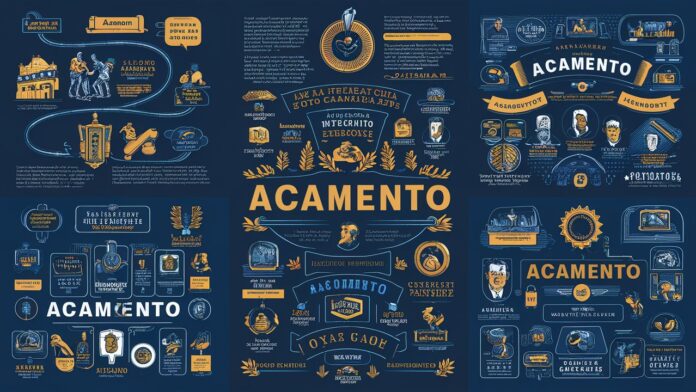Introduction
In the intricate world of design and craftsmanship, a single concept unifies aesthetics, functionality, and completeness: acamento. Derived from the Portuguese word “acabamento”, it embodies more than a mere finishing touch—it represents the nuanced refinement that transforms an ordinary creation into something exceptional. Whether in architecture, fashion, or furniture making, acamento ensures that projects not only perform well but also exude polish and longevity. In this article, we dive deep into the meaning of acamento, exploring its linguistic roots, practical applications, and how it elevates the quality of diverse creations across industries.
The Meaning and Linguistic Roots of Acamento
Acamento stems from the Portuguese “acabamento”, which translates to “finish” or “polish”—referring to the final detail that perfects an object or space. This involves the last steps that add refinement, polish, or structural completeness to a project WiktionaryCambridge Dictionary. In design terms, acamento might include surface treatments, decorative trims, or any final detail that ensures a creation feels finished. The essence lies in its capacity to shift something from merely functional to genuinely crafted and intentional.
Acamento in Architecture and Interior Design
In architectural and interior contexts, acamento refers to the visible elements added once basic construction is complete—such as wall plastering, paint, tile finishes, flooring, and fixtures. These details don’t just contribute aesthetic appeal; they influence mood, durability, and functionality. For example, choosing between matte or glossy paint, or installing textured wall treatments, are quintessential acamento decisions designed to impact both user experience and long-term performance livetranslatehub.comDot Magazine.
Acamento in Product and Furniture Design
Product and furniture designers rely heavily on acamento to elevate their creations. Surface finishes—like varnishes, powder coatings, or fabric piping—serve not only as decorative flourishes but also as protective layers that enhance usability and lifespan. A smooth leather sheen, carefully stamped logo, or fine wood polish is where design excellence becomes tangible. This finishing philosophy is a hallmark of renowned brands, signaling their commitment to quality and user experience livetranslatehub.comDot Magazine.
Acamento Across Industries: Practical and Cultural Applications
Industrial Manufacturing
In manufacturing, acamento is a vital step encompassing techniques like deburring, anodizing, electroplating, and polishing—everything that ensures parts meet safety and quality standards. Components in sectors such as automotive, aerospace, and electronics often undergo rigorous finishing to enhance performance and regulatory compliance Dot Magazine.
Digital and Software Contexts
The concept of acamento extends beyond physical creation. In digital products, it translates to polished interfaces, seamless user experiences, and micro-interactions that subtly refine user engagement. In software development and project workflows, acamento is akin to sprint reviews, bug fixes, and final documentation that ensure products are robust and refined Dot Magazinejdeconomics.com.
Cultural and Symbolic Dimensions
Historically and culturally, acamento represents completion and attention to detail—whether in rituals, crafts, or educational practices. From finishing the final brushstroke on a painting to ritualizing closure in ceremonies, acamento embodies the meaning we attach to endings done well jdeconomics.comBeZiddi.
Why Acamento Matters
Acamento matters because it signals care, craftsmanship, and value. A polished finish can:
-
Enhance Functionality – Protecting surfaces with sealants or finishes ensures durability.
-
Elevate Aesthetics – Visual and tactile refinement enhances appeal and user satisfaction.
-
Convey Quality – Whether in a garment or a digital interface, finishing touches communicate professionalism and trust.
In sustainable design, acamento also embraces eco-conscious materials and techniques like low-VOC paints and biodegradable coatings—aligning beauty with responsibility livetranslatehub.com.
Conclusion
Acamento is the art of thoughtful completion. Rooted in craftsmanship, it brings meaning to the final act of creation, transforming functional beginnings into polished final products. Whether in architecture, fashion, manufacturing, or digital design, acamento imbues projects with refinement, quality, and character. To finish well is more than a functional necessity—it’s a gesture of intention and excellence that transforms the ordinary into the unforgettable.
FAQ (Frequently Asked Questions)
Q1: What exactly does “acamento” mean?
Acamento refers to the final finish or refinement of a project—adding polish, detail, and intentional completeness; it comes from Portuguese “acabamento” meaning finish or polish WiktionaryCambridge Dictionary.
Q2: Where is acamento commonly applied?
It’s commonly applied in architecture (plaster, paint, fixtures), product design (varnish, upholstery), manufacturing (deburring, plating), and even digital design (user interface polish) Dot Magazinelivetranslatehub.com.
Q3: Is acamento only about looks?
Not at all. While visuals are key, acamento also enhances durability, function, user experience, and emotional impact Dot Magazinelivetranslatehub.com.
Q4: Why is acamento important in industry?
In sectors like aerospace or electronics, acamento ensures safety standards, functionality, and regulatory compliance through essential finishing processes Dot Magazine.
Q5: How does acamento relate to sustainability?
Sustainable acamento involves using eco-friendly, low-VOC, and recyclable finish materials that protect both people and the environment livetranslatehub.com.


